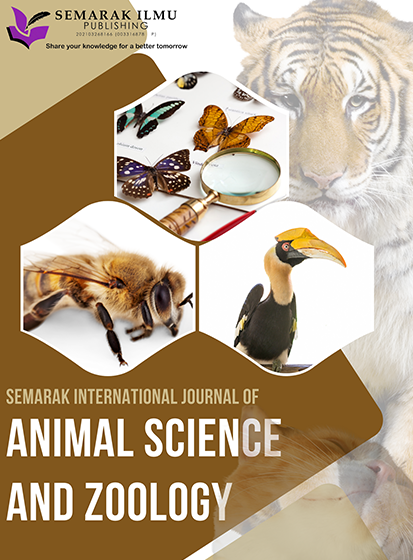Spatial Distribution of Green Stink Bug, Rhynchocoris Humeralis (Hemiptera: Pentatomidae) Before and After Chemical Control on Calamansi Trees at the Bangi Botanic Garden, UKM
DOI:
https://doi.org/10.37934/sijasz.1.1.18Keywords:
Calamansi, chemical control, distribution, Rhynchocoris humeralisAbstract
The green stink bug, Rhynchocoris humeralis is a dominant pest in calamansi plantations. The impact of the stink bug causes damage to calamansi fruits and leaves. Monitoring the abundance and distribution of pest insects is crucial for systematic pest control, but it is often neglected until the crop area is severely infested. Therefore, the objective of this study was to examine the spatial distribution of R. humeralis in calamansi trees and to compare its abundance before and after chemical control. Sampling was conducted in February and March 2024 using sweep nets, with data collected before and after chemical treatment. Insect sampling was done once before chemical treatment and twice after, one and two weeks post-treatment. Initial data recorded 71 insects before chemical control, which decreased to 45 one week after treatment but increased to 86 after two weeks. Data were analyzed using QGIS 3.36.2, and the results showed spatial distribution maps and density maps of R. humeralis, helping to identify changes in pest abundance before and after chemical treatment. Paired t-tests were conducted using RStudio to compare the distribution before and after treatment. The first comparison showed a statistically significant difference (p = 0.02268), while the second comparison was not significant (p = 0.3450). A deeper understanding of the spatial distribution of R. humeralis will help identify areas with higher insects, allowing for more effective control methods.













